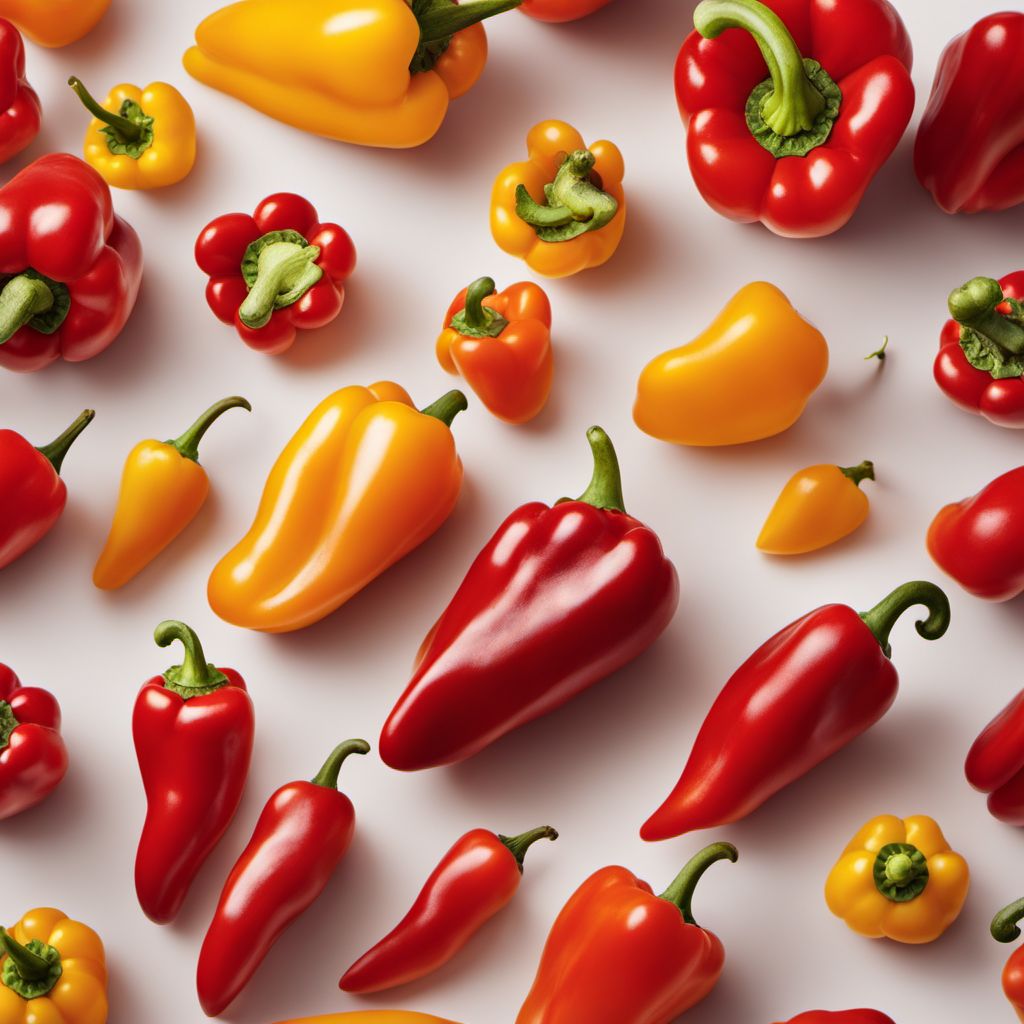
Ingredient
Peppers and similar-
The Fiery Symphony
Peppers and similar ingredients encompass a wide variety of chili peppers, including jalapenos, habaneros, serranos, and bell peppers. These vibrant and versatile ingredients are known for their distinct heat levels and unique flavor profiles. From mild and sweet to intensely spicy, peppers can elevate the taste of various dishes, adding depth and complexity.
Origins and history
Peppers have a rich history that dates back thousands of years. They originated in the Americas and were cultivated by indigenous cultures, such as the Mayans and Aztecs, who recognized their culinary and medicinal properties. Peppers eventually made their way to Europe through explorers and traders, becoming an integral part of global cuisines.
Nutritional information
Peppers are low in calories and fat, making them a healthy addition to meals. They are also a good source of vitamins A and C, as well as antioxidants that contribute to overall well-being. However, the heat of peppers can irritate sensitive digestive systems, so moderation is key for individuals with certain health conditions.
Allergens
Peppers, particularly chili peppers, are known allergens for some individuals. They can cause allergic reactions or digestive discomfort in sensitive individuals. It is important to be aware of personal tolerance and avoid consuming peppers if allergic reactions occur.
How to select
When selecting peppers, look for ones that are firm, glossy, and free from blemishes or soft spots. The color should be vibrant and consistent, indicating freshness. Choose peppers that match your desired heat level, whether mild or spicy. Additionally, consider the intended use of the peppers, as different varieties are better suited for specific culinary applications.
Storage recommendations
To maintain the freshness and quality of peppers, store them in a cool, dry place or in the refrigerator. Whole peppers can be stored for up to two weeks, while cut peppers should be used within a few days. To extend their shelf life, consider freezing or pickling peppers for future use.
How to produce
Peppers can be grown at home by planting seeds or seedlings in well-drained soil and providing adequate sunlight and water. They thrive in warm climates and can be cultivated in pots or garden beds. Regular pruning and fertilization will help promote healthy growth and maximize yield.
Preparation tips
When preparing peppers, it is important to handle them with caution, especially if working with spicy varieties. Wear gloves or wash hands thoroughly after handling peppers to avoid skin or eye irritation. Peppers can be used in various ways, including raw in salads, roasted for smoky flavors, or sautéed for added depth. Remove the seeds and membranes for milder heat or leave them intact for spicier dishes.
Culinary uses
Peppers and similar ingredients are widely used in cuisines around the world, including Mexican, Thai, Indian, and Mediterranean cuisines. They are incorporated into dishes such as salsas, curries, stir-fries, and stews, adding heat, color, and flavor.
Availability
Peppers and similar ingredients are cultivated and consumed in various regions globally. They are commonly found in countries like Mexico, India, Thailand, the United States, and many others.


